
1960 - A Bright Idea
The beginnings of Flos (meaning “flower” in Latin) blossomed from a brilliant idea: to create objects, starting with a light bulb, that would change the way of life for both the Italian market and the foreign markets.
Dino Gavina and the small Eisenkeil manufacturing facility in Merano, had already been creating furniture alongside design masters such as Achille and Pier Giacomo Castiglioni, Afra and Tobia Scarpa. But by the early ‘60s, Gavina became convinced the time had come to create new lamps.
Using the same technology – conceived in the USA and tested at Eisenkeil – used for the Cocoon lampthe Castiglioni brothers and the Scarpa duo began creating lamps such as the Taraxacum or the Fantasma, with many other beautiful and surprising lamps to follow.
And so, from day one, Flos was already reinventing the idea of artificial lighting.
by Stefano Casciani


Tobia Scarpa, 1961
1962 - Becoming Flos
How do you transform an industry into a laboratory to revolutionize the “lamp” concept? For Sergio Gandini, who began managing Flos in 1963, the company’s endeavors and creative fantasy could coexist without contradiction; the combination of the two would bring success to the brand.
Relocating to the industrial district of Brescia allowed for a conducive environment for designers, resulting in products such as the Bauhaus-inspired Jucker lamp by Tobia Scarpa or of the revolutionary Arco by the Castiglioni brothers. Flos’ strategies were based on what we would now call a Think Tank, establishing the company as a longstanding pioneer in Italian design.
Gandini, together with his exclusive designers (the Castiglioni brothers and the Scarpa duo), determined Flos’ products, communication strategy, and image. Together, they etched the lines of their own desires, the desire lines which brought about the most iconic lamps in the history of lighting.
by Stefano Casciani
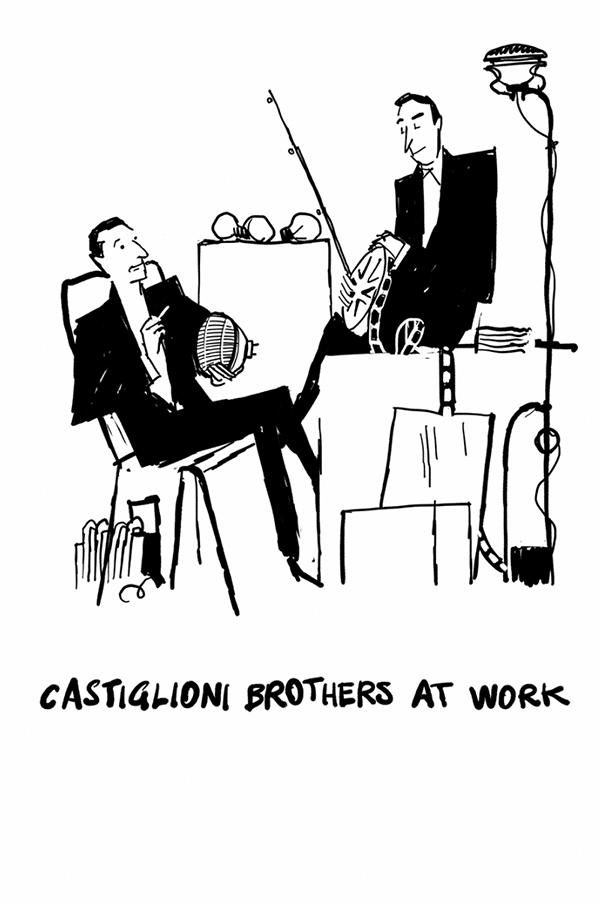

Sergio Gandini with the lamp Snoopy, A. and P.G. Castiglioni, 1968
1972 - From the MoMA to the world
In 1972, the “Italy The New Domestic Landscape” show at New York City’s MoMA– the most important museum of contemporary art in America – was a phenomenon of unprecedented popularity celebrating the culture of art and industry.
Flos was featured in the show with several pieces – in particular by the Castiglioni brothers – consolidating the brand as an international avant-garde company. From that moment, the firm’s development and its popularity went hand-in-hand. Between the ’70s and ’80s, they expanded their production with new facilities, their market with branches abroad, and their product catalog (which included the acquisition of dell’Arteluce by Gino Sarfatti).
Another exhibition by the great Achille Castiglioni which opened in 1984 was held in eight European capitals, from Vienna to Madrid, confirming the Flos experience as unique, unrepeatable and unpredictable in its constant evolution.
by Stefano Casciani
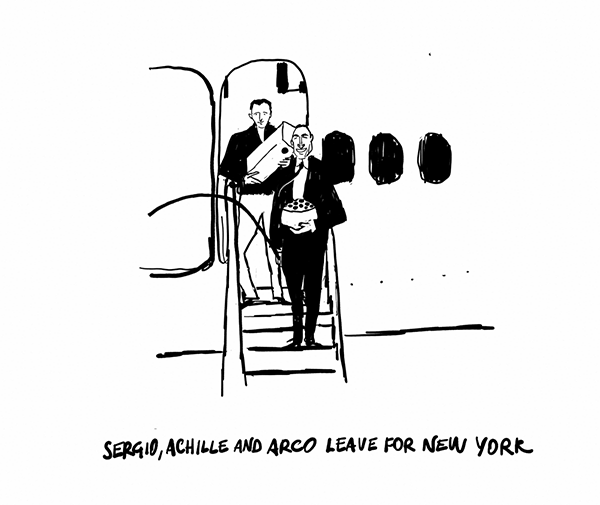

Sergio Gandini and Achille Castiglioni, 1974
1985 - Miss Sissi & Mister Gandini Jr.
Every great success comes from taking risks (or) from the courage to bet. In the mid ’80s, Sergio Gandini met a young Philippe Starck, and accepted to manufacture his fairy-tale lamp, Arà.
Seeing the potential in Starck’s visions Piero Gandini, who had begun working alongside his father, developed the Arà design on an industrial scale. He realized the big talent of the best of postmodern authors and decided to mass-produce one of Starck’s designs in plastic for a hotel in New York, a type of iconic table lamp later called Miss Sissi, defined by Starck as: “What everybody subconsciously thinks a lamp is.”
It proved an amazing success (8,000 pieces sold in the first 10 days, 100,000 in a year) and was the first in a long series of iconic best-sellers produced by Piero Gandini, together with Starck or Castiglioni. By way of new technologies and materials, they updated the Flos image and opened ingenious paths of research and development.
by Stefano Casciani
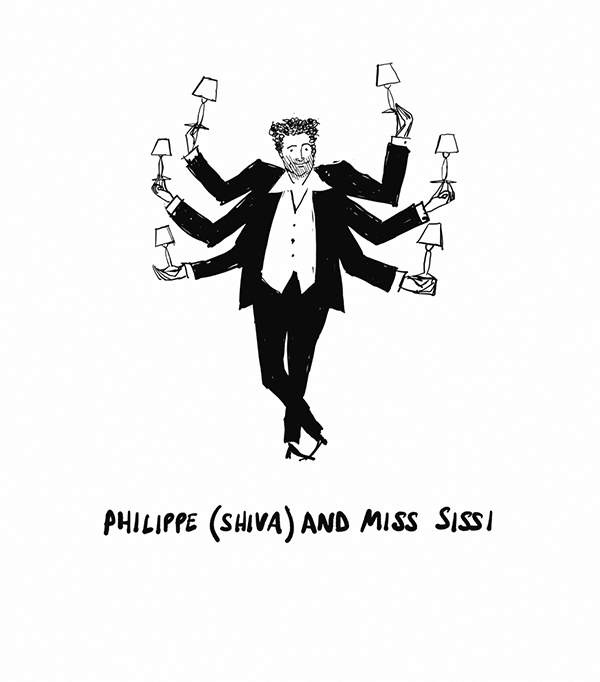

Philippe Starck with Piero Gandini in a Cadillac for the making of the Miss Sissi brochure, 1992
2000 - From one millennium to the next
Under Piero Gandini’s management, Flos focused on the harmony between iconic forms, artisan craftsmanship and mass-production technology. However, the crucial step towards change came with the realization that contemporary objects can be a form of expression, with as many stylistic interpretations as there are languages in the world.
And so, Piero Gandini called upon the most promising talents in international design: from the “futuristic” style of Australian Marc Newson (with his Helice Lamp in 1993), to the English prophet of minimalist design Jasper Morrison, to Konstantin Grcic, the most refined and eclectic German designer.
International talents also joined the communications team with the arrival of advertising superstar Bruno Le Moult and famous photographer Jean Baptiste Mondino who created unusual and captivating images of products old and new alike. As Flos entered the new millennium with the passing of the great founder Sergio Gandini, they had already established themselves as an industry well-equipped to face the challenges of globalization.
by Stefano Casciani
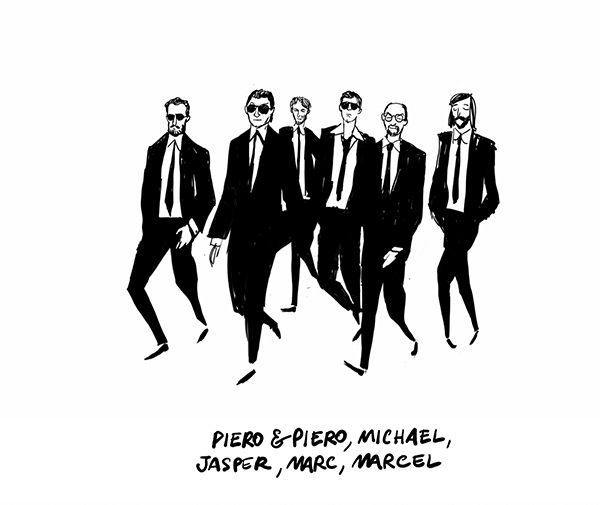

Jean Baptiste Mondino with Philippe Starck
2005 - Avant-garde and the contemporary
For Piero Gandini, developing a new Flos identity meant having the courage to make radical choices. Tackling the onslaught of LEDs in the realm of lighting was to be the first step in a second revolution of production which he started in the early 2000s with the acquisition of Federic Martinez’s firm Antares.
This led to the creation of Flos Architectural Lighting – dedicated to professional lighting for large-surface areas and public spaces. Piero discovered new designers and put them to work creating lighting architecture using the most advanced technologies. These very same technologies were used to create works of art such as ‘Ohhh!!!’ and ‘Ahhh!!!’ sculpture lamps in Baccarat Crystal by Starck, enlivened with some ‘Truisms’ by American Jenny Holzer (the critical statements against consumerism values – a contradiction as they were engraved on luxurious, desirable objects).
And so began, with this combination of art and technology, a production that would go beyond the usual conventions – for an adventurous journey with no turning back.
by Stefano Casciani
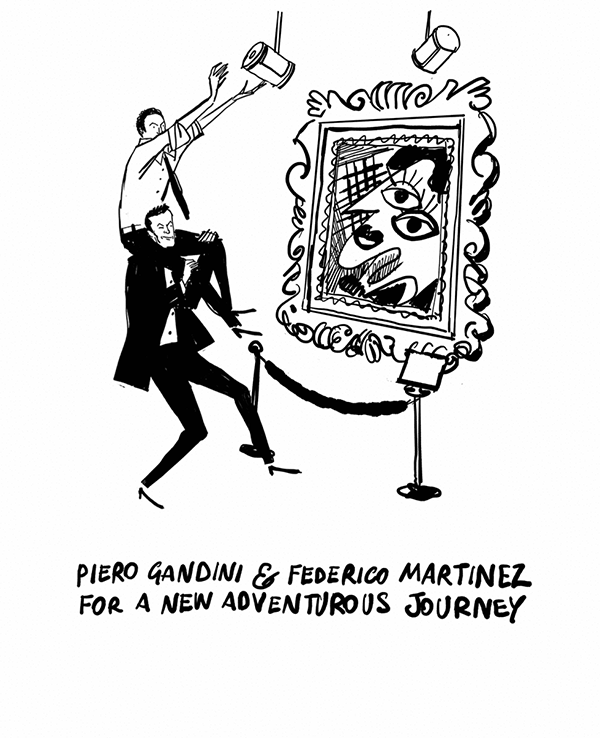

Marcel Wanders, Skygarden suspension lamp in plaster, glass, stainless steel, 2006/2007
2017 - A Lighting Manifesto
“Today, like never before, we must find the synthesis of emotions, technology, poetry, needs, messages, aesthetic and political values. It is not just changing the technique but the society itself and our behaviors, both public and private. We must push beyond our capabilities and imagination to improve people’s lives… with the same poetry as the light in the ancient flame of a campfire under the stars.” As Piero Gandini declares.
If the future is now, what will artificial lighting of tomorrow be?
In the Flos vision, there are and always will be totally new types of lighting. New ones that have to be studied, developed and produced with a radical, groundbreaking attitude, and still balancing it with the cultural rigor on which Flos was founded.
All lighting environments must be designed like this, starting from the house, with the Home Division. The 2017 collection is a prime example, where the architects, designers and design-artists have been creating the icons of tomorrow, producing lighting fixtures as sculptures, balancing acts of form, playing games.
The Flos Architectural line encompasses a wider, environmental vision to include the workplace, entertainment and even the non-places of mass consumption. Flos Outdoor focuses on natural spaces like gardens, parks and landscapes. As Philippe Starck says: “There is no difference between artificial and natural light. It’s just a matter of transmission – ions and photons remain the same.”
by Stefano Casciani


Michael Anastassiades with Arrangements, Euroluce 2017
Euroluce 2017
















